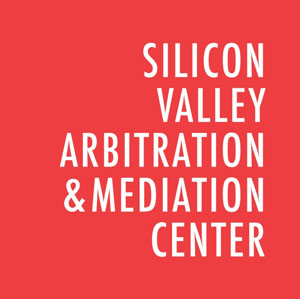I wasn’t surprised when a senior patent lawyer for one of the oldest Silicon Valley companies failed to think about ADR for resolving a patent infringement claim. After all, some things don’t change and, even when something does change, old ways are slow to change with it.
What has changed is that US patent litigation has been turned upside-down as a result of various reforms instituted through the 2012 America Invents Act (AIA). In the past, patent litigation was the name of the game and it took years and substantial cost to get to a decision on the merits. Now, patent litigations are taking a back seat to updated post-grant administrative proceedings, particularly Inter Partes Review (IPR) proceedings, which may result in the invalidation of a patent within a year to 18 months.
No doubt, IPR proceedings have their advantages, particularly for patent defendants. In IPR proceedings, unlike in district court, there is no presumption of validity. The burden of proving unpatentability is by a mere preponderance of evidence standard rather than the clear and convincing evidence standard used by the courts. Claim construction is granted the “broadest reasonable construction” rather than “ordinary and customary meaning.”
Most significantly, unlike most judges and juries who decide patent litigations, post-grant proceedings are decided by experienced administrative judges. Apparently, it makes a difference. In approximately 70% of all IPR proceedings, all instituted claims were cancelled, and at least some claims were cancelled in the remaining 30%.
Not only has the process changed but the dynamics have as well. The up-front costs of IPR and other post-grant proceedings have discouraged plaintiffs from filing suits, regardless of whether they are inventors, start-ups, public companies or Non-Practicing Entities (NPEs), so-called patent trolls. No doubt the hardest hit are those plaintiffs who rely on contingency fee lawyers. Contingency lawyers are increasingly reluctant to take on cases given the up-front costs and risks of post-grant proceedings. On the other hand, the AIA reform is shifting the lawsuits that are filed to larger, well-financed NPEs who have the resources to make patent battles bigger fights.
Yes, post-grant proceedings are a change. But there doesn’t seem to be much joy over it from either side. The AIA has created more proceedings not less, and there is still the possibility of Federal Circuit and further appeals in every case. There are ongoing calls for new reforms: fast track proceedings, earlier Markman hearings, standardized claim interpretation and stronger sanctions, to name just a few.
All of this focus on administrative procedure and patent reform ignores an important fact: most patent cases settle. And this is where that senior patent lawyer wasn’t thinking. His gut reaction on receiving a new Complaint is to consider which post-grant proceeding to file. It would be a lot smarter – and more business savvy – if he thought about mediation or arbitration instead.
If chances are that a patent dispute will settle, it makes sense to explore that up front through direct negotiation or mediation rather than wasting resources in an adversary process. That senior patent lawyer may be thinking right about patent procedures but, from a business perspective, getting a matter resolved promptly and efficiently should be the real goal.
Where a claim isn’t ripe for settlement or a party wants a decision on the merits, including an earlier Markman hearing or focused discovery, why choose an 18-month administrative proceeding, the possibility of an ongoing litigation and possible appeals, instead of a private arbitration that provides a customized process and a conclusion more quickly? Opting for arbitration would allow the parties to select the arbitrator(s) and specify procedures to be followed. By statute, patent arbitrations are final and binding between the parties, and avoid the risk of further appeals. And significantly, the proceedings are private.
ADR has two other advantages which makes it useful as an alternative or supplement to administrative proceedings and litigation. First, there is no time limit on initiating ADR. Unlike IPR proceedings that must be filed within one-year from the filing of a lawsuit, ADR can be undertaken at any time.
Second, unlike administrative proceedings, ADR isn’t limited to validity issues. Both validity and infringement can be resolved quickly and efficiently, once and for all, through mediation or arbitration.
In sum, ADR is a resource that should be considered before, during and even after adversarial proceedings. ADR provides solutions that neither patent litigation nor post-grant proceedings offer. It’s something for all parties in a patent dispute to consider, particularly that senior patent lawyer the next time his company gets served with a Complaint.
Gary
